When we wrote about best practices for CMP implementation in June 2023, Consent Mode was only an option. More than one legal department rejected it due to the multiplying ambiguities regarding the operation of the mode. It is now 2024 and Consent Mode has been updated to version 2.01– what does this mean in practice and how will it affect the websites’ functioning? Keep reading to find out.
Content Summary
This blog post specifically describes Consent Mode 2.0 from Google. It discusses its role in aligning online marketing strategies with current data privacy standards.
By reading this article, you will gain an in-depth understanding of the new features and implications of the update and acquire practical tips for seamlessly integrating Consent Mode 2.0 into your marketing efforts. Not only will you learn how to comply with the changing privacy regulations, but most importantly, you will discover how to exploit the potential of Google Consent Mode v2. Ultimately, using the tips from this article, you will see ways to advertise services and products online more effectively and responsibly.
Disclaimer
The article provides a detailed technical exploration of the Google Consent Mode implementation. We advise consulting your legal department for all business decisions related to both the implementation process and the selection of specific variants or versions.
Introduction to Google Consent Mode
The need to enforce regulations regarding user consent and the processing of personal data has led to changes in the conduct of online advertising activities. The regulations mentioned are primarily the ePrivacy Directive, the General Data Protection Regulation and the Digital Markets Act (DMA). They require compliance with the law in terms of how personal data is processed and shared. In practice, this means that user consent to be tracked is necessary. Now, in the age of Consent Mode 2.0, this consent is more vital than ever.
Evolution of Digital Advertising and Privacy Legislation
Unlike artificial intelligence tools, for which the law is currently emerging (AI Act), digital privacy legislation has not suddenly appeared. The rules governing the processing of user data online have been in place since 2018, that is, since the formulation of the GDPR in the EU (this legislation is known in Poland as RODO). They set out the rights and obligations that websites have when using cookies other than those necessary for the functioning of the website. Compliance with these requirements is facilitated by tools from the group of Consent Management Platforms (CMPs). More and more of these have been appearing on the market recently, and the best and most popular ones were described in our article on CMP implementation.
The update to Google Consent 2.0 is connected to the entry into force of the Digital Markets Act. This ordinance lists all companies, involving Google, to be covered by the DMA regulations. March 2024 is the final term for those companies (so-called ‘Gatekeepers’) to prove that the data they collect comes from users who have knowingly and voluntarily given their consent.

From 6 March 2024, advertisers without active user consent will be prevented from using tools such as remarketing or audience list ad creation and targeting in Google Analytics. These functions will no longer be available without explicit and active user consent.
To carry out online marketing activities in compliance with current regulations, from March advertisers will be required to:
- Have a consent management tool (in the form of an in-house solution or a Consent Management Platform of their choice) integrated into their website.
- Implement a Consent Mode 2.0 solution (those using the previous version must upgrade).
Google has been working with CMP tool developers for a long time, adapting its solutions to changing legal requirements. It has introduced conditional activation of analytics tags in consent mode as an addition to the CMP configuration. This solution has so far been the only one and is also optional.
Google Consent Mode 1.0 Overview
Google Consent Mode 1.0 customised the operation of tags based on user consent. It enabled the use of detailed statistical data derived from pings from the website, needed to power Google products such as conversion modelling (Google Ads, Floodlight, etc.) and visitor behaviour (Google Analytics 4). At the same time, it ensured compliance with GDPR and other privacy laws worldwide.
The pings only contained aggregate statistical data about the visit, without storing cookies, including information about conversion events. This allowed gaps in data about actual user actions to be filled in with modelled visitor data. This solution provided information closer to reality than in the absence of this data in case of no user consent.
Until now, it worked like this:
- When a user selects consent/refusal on a cookie consent banner or widget, Consent Mode dynamically modifies the performance of various Google services, such as Analytics or Ads, that generate or read these cookies.
- In situations when consent is not given, the tags do not create cookies. Instead, they transmit signals (called pings) to Google. In case of using Google Analytics 4, Google filled in any gaps in the data collected in the reports using modelling techniques.
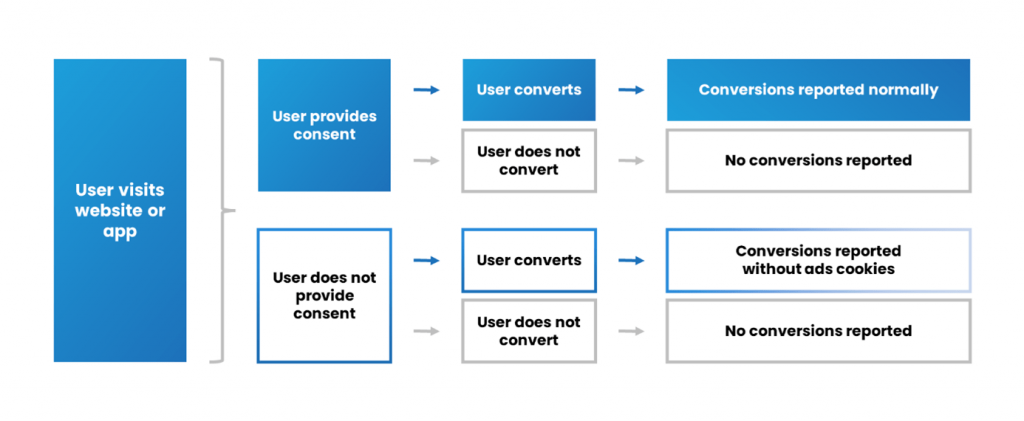
Until now, the optional Google Consent Mode 1.0 will become mandatory Google Consent Mode v2 from March 2024. It will also be referred to as ‘advanced’ mode, which means Google Consent Mode 2.0 (Advanced).
Google Consent Mode 2.0 key features
The new version of Consent Mode allows companies to provide Google with user consent choices, especially about the use of data for advertising purposes. This includes detailed data in the case of consent and limited data without the use of cookies and identifiers in the absence of consent but with estimation or data modelling depending on the version of Consent Mode (basic/advanced).
Improved User Consent Management
If you want to continue to use Google Ads for advertising in the European Economic Area (EEA) markets, by March 2024 you have to start using a cookie banner integrated with Google Consent Mode 2.0.
The new version of Consent Mode allows you to carry out the implementation in two ways, as the mode comes in a Basic and an Advanced model. We will discuss the differences between the two later in the articles, discussing the impact of Consent Mode 2.0 on Google Ads.
New Consent States: Ad_User_Data and Ad_Personalisation
The main difference between Consent Mode 1.0 and 2.0 is the introduction of two additional consent states: ad_user_data and ad_personalization. These are vital to understanding and managing user preferences for ad personalisation and data sharing.
- ad_user_data – is used to set consent for user data to be sent to Google for advertising purposes. Site users have to agree to share their data with Google via the cookie consent banner.
- ad_personalization – controls whether data can be used for ad personalisation (for example remarketing). Users must agree (as above, via the cookie consent banner) to share their data with Google to receive personalised advertising.
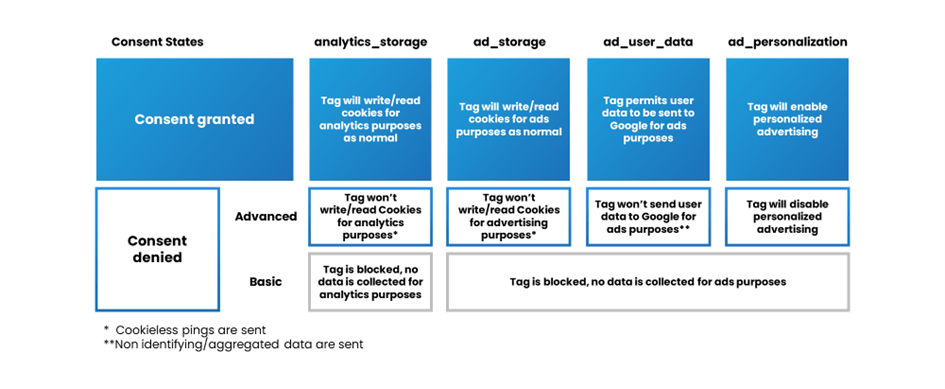
Until now, the analytics_storage and ad_storage consent mode parameter tags were linked exclusively to data collection. Meanwhile, the function of the tags in version 2.0 is to instruct Google services on how user data can be used for advertising purposes.
The Importance of the Update for Analytics and Advertising
The adoption of Consent Mode 2.0 is particularly relevant for businesses that use Google Ads. This is because it enables accurate conversion tracking and optimisation of ad spending in EEA markets. Abandoning the use of Consent Mode in version v2 means the loss of key user information. This way, it creates difficulties in analysing site performance and optimising Google Ads campaigns due to incomplete data.
Impact on Google Ads and Conversion Tracking
From March 2024, Google must guarantee that the data they collect comes from users who have knowingly and voluntarily consented. The introduction of Google Consent Mode 2.0 somewhat extends this obligation to include website owners.
Opting out of Consent Mode means that the information provided to GA4 will only relate to users who have given their consent. However, we will not know what percentage of all users this is, therefore the data collected is incomplete.
We have already mentioned that the new version of Consent Mode can be implemented in a basic or advanced model. When choosing between those models, every marketer should bear in mind that:
- When implementing Consent Mode 2.0 in the basic version, no consent means that no information is collected from users (including the consent status itself). Tags remain blocked and are not sent as long as consent is given. On the other hand, data modelling is based only on general data and basic estimates.
- With the implementation of Consent Mode 2.0 in the advanced version, lack of consent involves the collection of data, but without cookies (that means data that do not contain personal identifiers). Google gathers information such as device type, country, time of day, conversion type or browser type as factors that will increase the accuracy of the modelling.
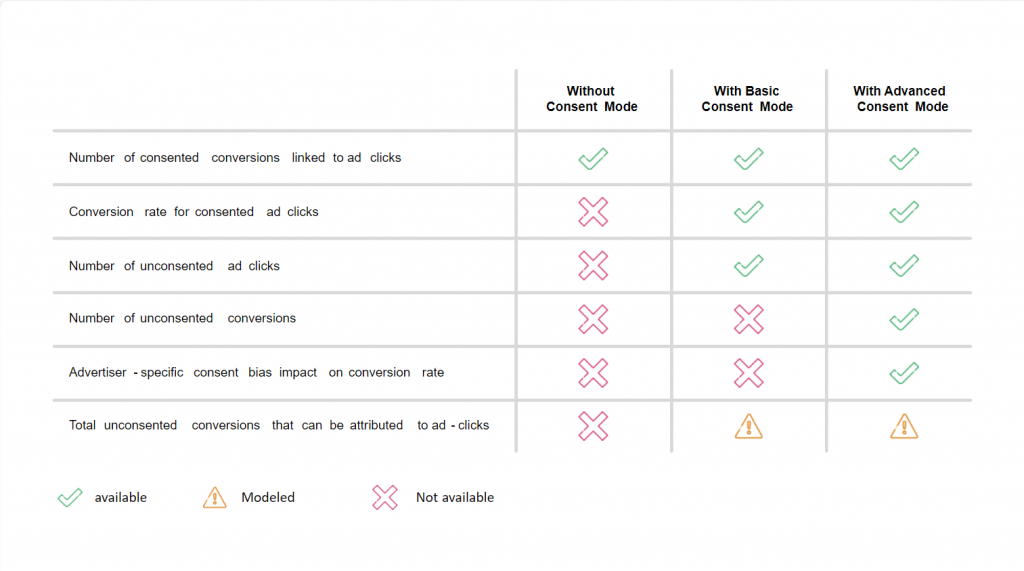
What Are the Benefits of Conversion Modelling?
If the reporting identity in GA4 is set as mixed, implementing Consent Mode will grant you the ability to use a method called ‘behavioural modelling’. This is the estimation of user activity when identifiers such as cookies and user ID are not fully available. Without modelling, reports do not take into account data that cannot be directly observed.
The basic version of Consent Mode v2 conversion modelling compares the number of total ad clicks with the number of transitions from the ad to the page of those users who have consented. This is how Google can estimate the number of conversions of users without consent and model conversions in Google Ads reports on this basis (in GA4, the lack of information on the number of refusals prevents conversion modelling).
Then again, in the advanced version of Consent Mode 2.0 conversion modelling is easier as the total number of conversions of users who have not given consent to be tracked is known. In the advanced version, the total data on visit source, device type, country, time of day, conversion type and browser type are also known. The use of this data contributes to greater precision in the modelling of conversions in individual campaigns, especially as analogies to the behaviour of those users who have given the relevant consent are also considered.
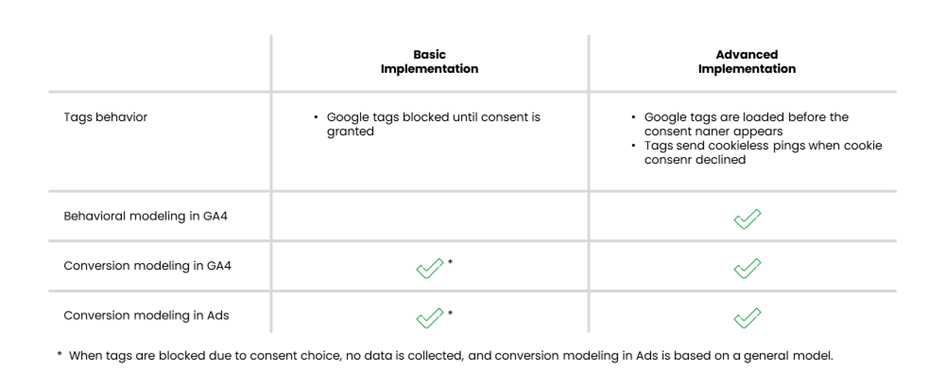
Google Consent Mode 2.0 Implementation
With the changes made to Consent Mode, Google is assuring compliance with current privacy laws and regulations. At the same time, it provides businesses with advanced capabilities to process user data while respecting the consent given or not.
Upgrade from Consent Mode 1.0 to 2.0 Step by Step
From March 2024, the lack of Consent Mode will result in the blocking of the use of Google Ads for advertising purposes in EEA markets, including conversion tracking remarketing. Having the ‘old script’ will come with the limitations of using the basic version described earlier.
Fortunately, the transition from Consent Mode 1.0 to 2.0 is not complicated but requires commitment and changes to the site code or GTM container (depending on how the CMP tool is implemented on the site). An update to the script/tag for the default consent set is necessary, which involves adding two new consent states: Ad_User_Data and Ad_Personalisation.
The default consent set supports two events:
- Default consent — an event triggered when the user enters the service. It sets the ‘Denied’ status for all consent categories (except for Security_storage).
- Update consent — event triggered when a user gives or changes consent in the CMP cookie banner.
The next step is to update the script/tag for the chosen consent management platform (CMP). Depending on the solution chosen, it will be longer or shorter. The most important thing is to make sure you are using a tool that has been awarded ‘CMP Partner’ status by Google. This ensures that it makes the relevant updates and is fully compatible with Google tools.
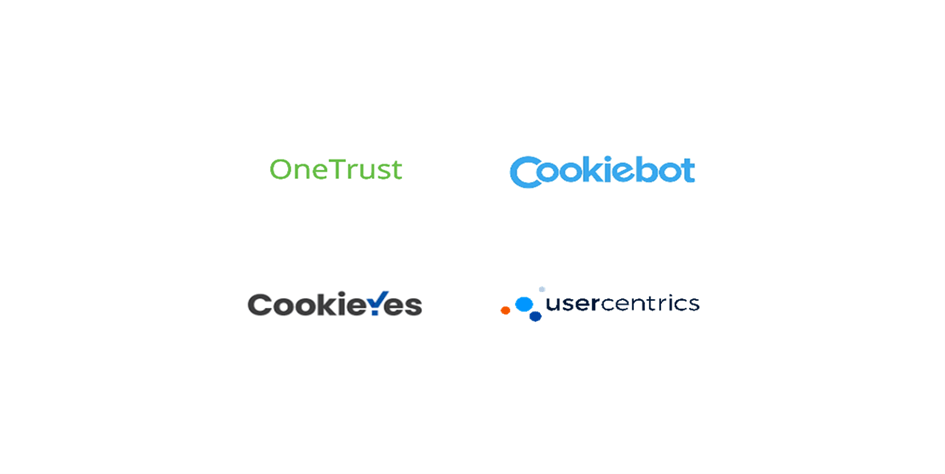
The final step is testing to verify the correct implementation of Consent Mode v2. For this, it is best to use Google Tag Assistant and/or Chrome Console. This will allow you to test different hypotheses and get a picture of how and when changes in tag behaviour occur depending on the user’s consent being given or changed.
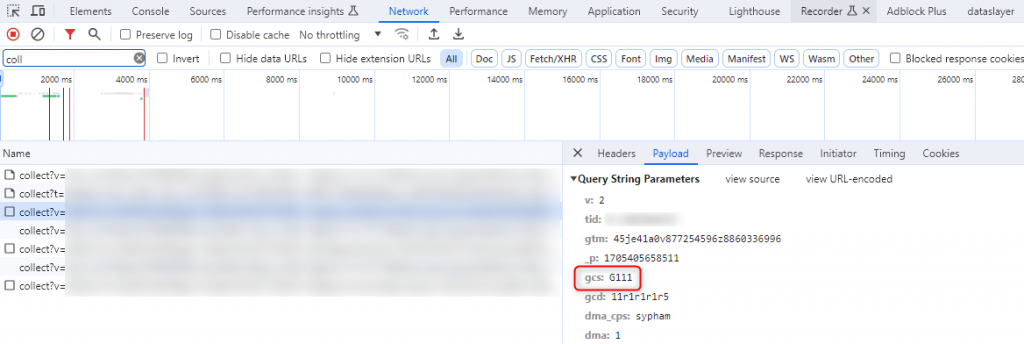
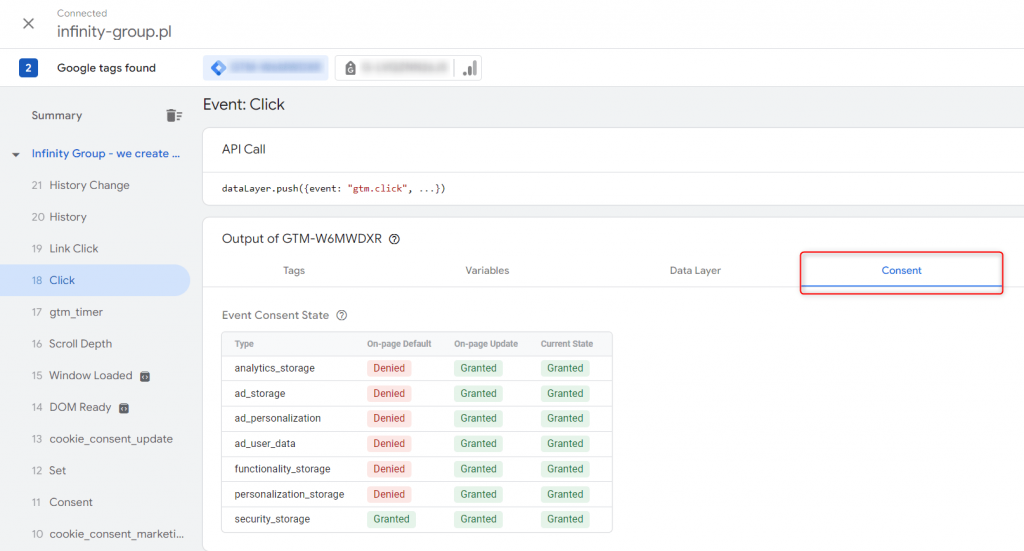
Summary
Online marketing in consent mode deviates significantly from the popular data analysis, which might be summarised in one sentence: “Let’s gather all the data, and we will think about what to do with it later”. This approach is outdated and long gone.
If you decide to collect any data on users who did not consent to launch a specific service on your website, you can suffer the consequences coming from the illegality and lack of ethics of those kinds of practices. Those consequences are far more serious than simply tarnishing your company’s reputation, and at the same time, you endanger the safety of the data.
A change in approach is inevitable to continue data-driven marketing efforts. Effective implementation of the objectives of current and future marketing strategies in the face of new regulations requires:
- having a properly designed CMP consent management mechanism that allows for an optimal approach to data while respecting the privacy of its users,
- finally migrating to GA4 (see Google Analytics 4: Welcome to the Future of Web Analytics – IG Blog),
- launching mechanisms for modelling behavioural and conversion data, with a properly implemented Google Consent Mode v2 as a form of retrieving data that individual users do not want to share,
- using analytics tools hosted from your own server (server-side GTM), which will allow you to have control over the data before it goes to external analytics and advertising tools.
FAQ
Do I need to use consent mode from March 2024?
If you operate in the European Economic Area or the users visiting your service are from the European Economic Area, then yes. The Advanced model applies to you if you use Google’s advertising services.
What if Consent Mode is not implemented by March 2024?
You will most likely be deprived of the ability to build audience groups and use remarketing. Links between GA4 services and Google Ads will also be restricted or stop working.
Is anything changing from a legal perspective in terms of data protection?
The implementation is purely technical and responds to the adaptation of the Consent Mode mechanism dedicated to Google tags, in line with upcoming legal regulations. Whichever option you choose: no Consent Mode, Basic Consent Mode or Advanced Consent Mode, consult your choice with your legal department.
- “Consent Mode v2” acts interchangeably with “Consent Mode 2.0” ↩︎






